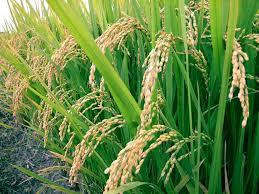 Ever since we at Blue Moon started growing our own rice, I’ve found myself wondering about its history. Where did it originate? How long have we been cultivating it? What makes it so special? Rice, it turns out, is a fascinating crop—and not only because of its history.
Ever since we at Blue Moon started growing our own rice, I’ve found myself wondering about its history. Where did it originate? How long have we been cultivating it? What makes it so special? Rice, it turns out, is a fascinating crop—and not only because of its history.
When you get right down to it, rice is basically a seed—a grass seed. There are two major types of rice: Indica and Japonica. Indica is the non-sticky, flakey, long-grained variety; Japonica is the sticky, short-grained variety. Basmati and jasmine are two well-known indica rices; sushi rice and Arborio are two well-known Japonica varieties. Indicas are generally grown near the equator, the Philippines, India, Pakistan, Indonesia, etc. Japonicas, on the other hand, are grown in temperate and mountainous regions, including Japan and Korea.
According to Chinese legends, rice domestication began under Chinese Emperor Shennong, the inventor of Chinese Agriculture. (Though from what we know about emperors’ propensity for self-aggrandizement, we would do well to assume it was invented by one of his minions!) More reliable genetic evidence shows that rice originates from a single domestication some 8,200 to 13,500 years ago, in China’s Pearl River valley region. From there, it was introduced to Europe, and later the Americas.
These days, rice plays an enormous role in global nutrition. It’s the staple food for over half the world’s population, providing 20% of total global dietary energy supply. It provides more than one fifth of calories consumed by human beings. And it’s the agricultural commodity with the third-highest worldwide production, after sugarcane and maize. All of which is to say that rice is a pretty big deal!
Rice’s history is a long and interesting one, and we at Blue Moon Acres are humbled to play a small part in its future.

